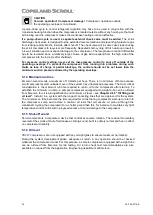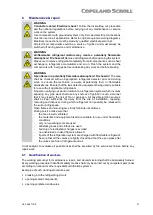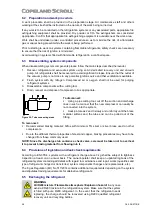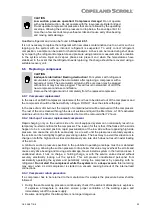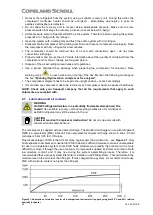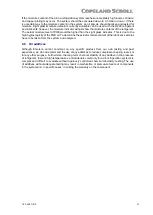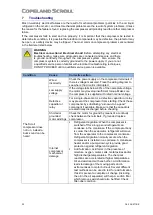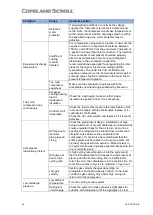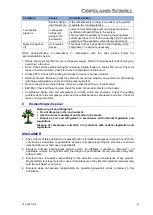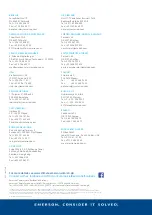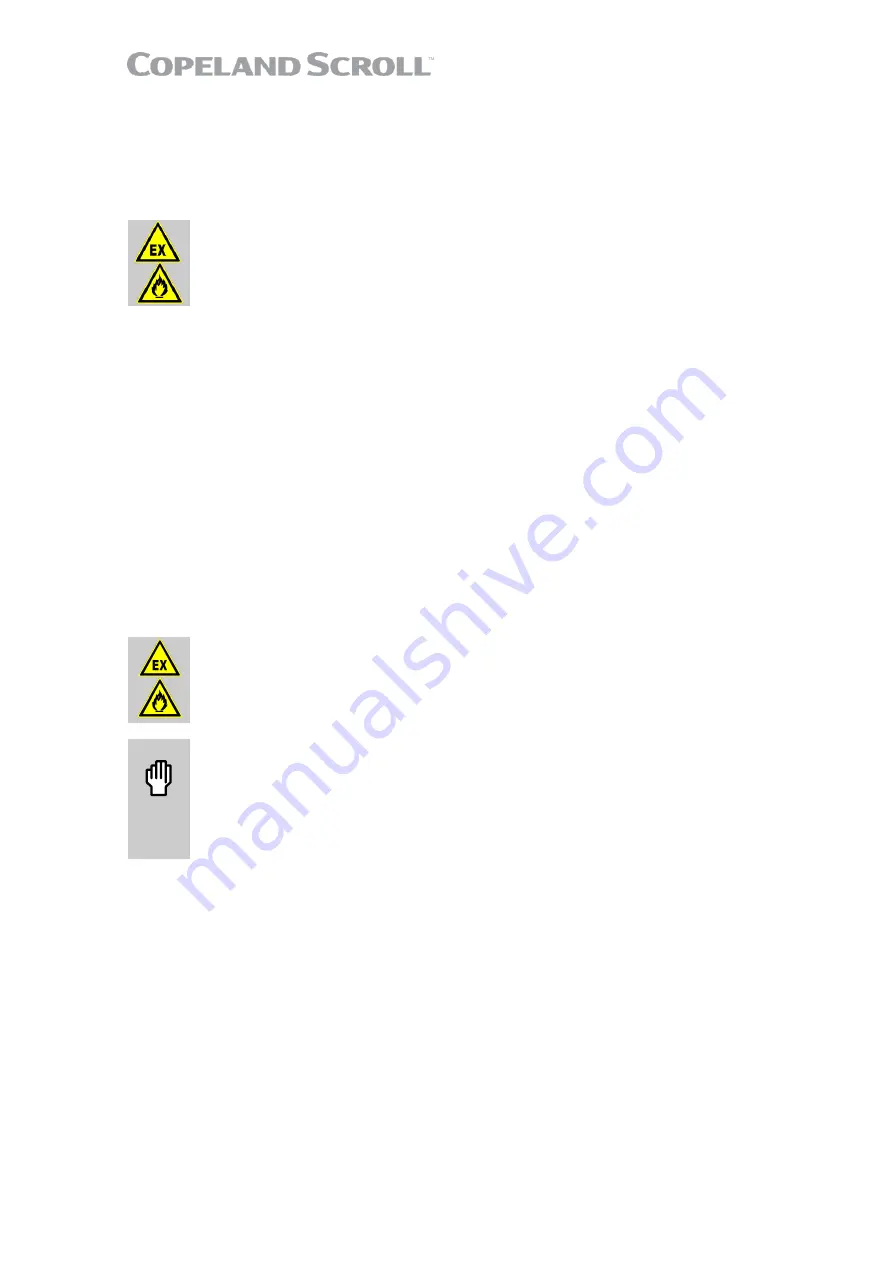
24
C6.2.38/0719/E
axially seal with the scroll set, with the higher pressure on the floating seal. Consequently, until the
pressures equalise, the floating seal and scroll set can be held tightly together.
The highest demands are placed on the leak-proof design of the installation and on the leak testing
methods (please refer to EN 378).
5.4 Preliminary checks
– Pre-starting
WARNING
Air/R290 refrigerant mixture in a potentially flammable atmosphere!
Explosion hazard!
Whenever starting up a system charged with R290
refrigerant, eg, after filling, repair, or maintenance, make sure not to start and
operate accidentally in a flammable or explosive atmosphere.
Discuss details of the installation with the installer. If possible, obtain drawings, wiring diagrams, etc..
It is ideal to use a check-list but always check the following:
▪
No explosive atmosphere or flammable gas in the ambient
▪
Suitable ventilation according to the room volume and to the refrigerant charge
▪
Visual check of the electrics, wiring, fuses etc
▪
Cable glands in good state, all electrical connections well connected and terminal box closed to
ensure corresponding IP protection
▪
Visual check of the plant for leaks, loose component parts such as TXV bulbs or solenoid valve
coil, loose wires in electrical installation, etc
▪
Functional test of HP & LP switches and any pressure actuated valves
▪
Check setting and operation of all safety features and protection devices
▪
All valves in the correct running position
▪
Pressure and compound gauges fitted
▪
Correctly charged with refrigerant
▪
Compressor electrical auxiliary switch location and position
5.5 Charging procedure
WARNING
Air/R290 refrigerant mixture in a potentially flammable atmosphere!
Explosion hazard!
Only use filling equipment designed and approved for use
and operation with R290. Make sure all connections are tight to avoid leakage.
Make sure to fill with pure R290.
CAUTION
Low suction pressure operation! Compressor damage!
Do not operate
with a restricted suction. Do not operate with the low-pressure cut-out bridged.
Do not operate the compressor at pressures not allowed by the operating
envelope. Allowing the suction pressure to drop below the envelope limit for
more than a few seconds may overheat scrolls and cause early drive bearing
and moving parts damage.
Prior to charging or re-charging, the system must be leak- and pressure-tested with appropriate
purging gas.
Ensure that the refrigerant system is grounded prior to charging with refrigerant.
The system should be liquid-charged through the liquid-receiver shut-off valve or through a valve in
the liquid line. The use of a filter drier in the charging line is highly recommended. Since scrolls have
discharge check valves, systems should be liquid-charged on both the high and low sides
simultaneously to ensure a positive refrigerant pressure is present in the compressor before it runs.
The majority of the charge should be placed in the high side of the system to prevent bearing washout
during first-time start on the assembly line.
Extreme care shall be taken not to overfill the refrigerant system.
The system manufacturer/installer must respect the charge limitations according to valid standards,
such as EN 378.
Summary of Contents for Copeland Scroll YBVH021 1U-3E9
Page 5: ......

















